Your vehicle is equipped with a number of sensors that are used for monitoring all kinds of information. Among them is the knock sensor, which is a listening device located near the engine that detects vibrations caused by engine detonation or “knock.”
P0327 is one of several trouble codes related to a faulty knock sensor. If your scan tool is showing this code, read on to learn more about the symptoms, probable causes, and other pertinent information
What Does the P0327 Code Mean?
Diagnostic trouble code (DTC) P0327 stands for “Knock Sensor 1 Circuit Low Input (Bank 1 or Single Sensor).” It is triggered when the powertrain control module (PCM) detects very low voltage readings from your vehicle’s primary knock sensor circuit.
Take note that the voltage value may vary depending on your vehicle’s make and model.
For an in-depth discussion of what knock sensors are and how they work, read our explanation here.
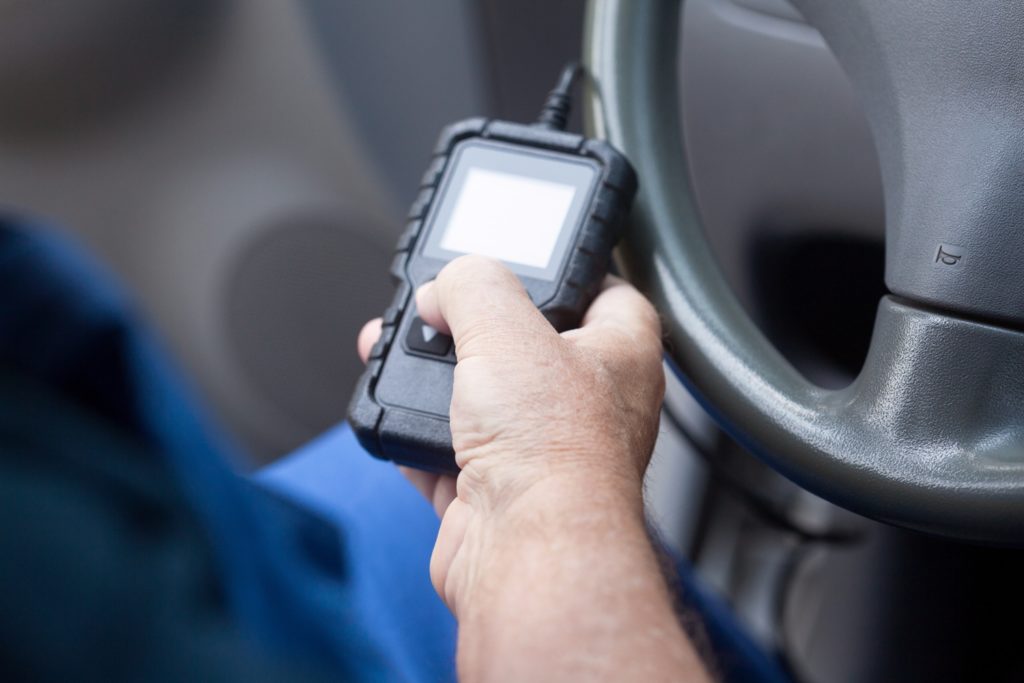
What are the Possible Causes of the P0327 Code?
P0327 is a generic code. This means that it is supported by various makes and models. However, the diagnostic and repair procedures may vary depending on your vehicle’s make and model.
Here are the possible triggers of a P0327 code:
- Faulty knock sensor
- Knock sensor circuit problem
- Issues with the PCM (e.g., software needs update)
What are the Common Symptoms of the P0327 Code?
Symptoms related to the P0327 code may vary depending on your vehicle. Here are the common ones you should watch for:
- Illuminated check engine light
- Engine pings on acceleration
- The engine may not exhibit noticeable symptoms
- Fluctuating engine RPM
In some cases, the engine may not exhibit any noticeable symptoms related to the P0327 code. As a general rule, once your check engine light illuminates, make sure to have your vehicle checked by your mechanic.
How to Diagnose the P0327 Code
With numerous possible causes, it usually takes an expert to be able to pinpoint the underlying cause of an OBD-II code. However, that doesn’t mean that you can’t attempt to diagnose the issue yourself, especially if you have some automotive repair skills and know-how.
Here’s a helpful video reference you can watch to help you understand and implement the diagnostic process:
How to Fix the P0327 Code
The solution for the P0327 code varies based on two main factors: what triggered the code, and your vehicle’s make and model. This can make it difficult to determine the right fix if you aren’t well-versed in automotive repair or OBD-II codes in general.
Not only will you have to identify the exact cause of the issue, but you also need to ensure that the solution is appropriate to your vehicle.
Ready to tackle the P0327? Once you’ve diagnosed the problem that’s causing it, the next step is to do some research on the repairs that have worked for other vehicle owners who have experienced the code due to the same issue. The exact repair may differ depending on the vehicle, so make sure to limit your research to similar vehicles.
For example, replacing the affected knock sensor is reported to have resolved code P0327 in certain Chevy vehicles, so if you have a Chevy Astro or Silverado 1500, this could work for you as well—provided that the knock sensor is the underlying cause for you, of course.
When doing any kind of work on your car, make sure to consult online auto repair resources to ensure that you are guided accordingly. You can also secure an ALLDATA subscription for single vehicles for in-depth factory repair information.
And remember—always consult your owner’s manual when doing any DIY work on your vehicle.
What Do Knock Sensors Do?
To begin with, it’s important to understand what engine “knock” is and what the knock sensor is listening for. Some old time drivers refer to this as “valve rattle,” but it has nothing to do with the valves.
Some old time drivers refer to engine knock as “valve rattle,” but it has nothing to do with the valves.
–Richard McCuistian, ASE Certified Master Automobile Technician
What Knock Sensors Listen For
When a cylinder is healthy, there will be no knock at all. But with the ultra lean mixtures being used in modern engines, combustion temperature tends to be hotter. And when the combustion heat is transferred to carbon deposits on the cylinder head and piston crown, some of the carbon can become hot enough to begin the combustion process before the spark plug fires.
When that happens, the resulting multiple flame fronts can come together and impact the crown of the piston as it is traveling upward with enough force to make the “ping” sound that means “detonation” is happening.
Part of the reason this happens is that, as carbon begins to cake the head and the piston crown, those layers take up room in the combustion chamber so that compression is increased, and the combustion event is hotter than normal.
In bygone years, when the ignition timing was adjusted by turning the distributor, if the timing was too far advanced, a similar thing would happen, only that was called “spark knock,” because the spark is actually happening before it is supposed to, and the resulting combustion event is “pinging” on the head of the piston as it is rising.

How Knock Sensors Work
Okay, so, your knock sensor is listening for a particular frequency and is tuned for your engine. The kind of engine knock the sensor is “listening” for is measured in thousands of cycles per second (kHz). Engineers determine the knock frequency for the engine and the window of crankshaft rotation where each cylinder will experience detonation.
Any “knock” the knock sensor hears that doesn’t match the expected frequency or doesn’t happen within the expected window for one of the cylinders is ignored. This is also apropos in that the ECM/PCM can determine which cylinder(s) the pinging is coming from.
The good news is that, with coil-on-plug engines, the timing for each cylinder can be controlled separately – thus if only one engine is “pinging,” the ignition timing of that particular cylinder can be retarded just enough that the pinging stops.
As for sensor operation, depending on severity of the measured knock, the sensor will produce spikes from 0 – 4.5 volts. Even on a normally operating engine, there will be some activity from the knock sensor and the ECM/PCM knows this. When the engine is running and the knock sensor doesn’t produce any kind of signal at all, code P0327 is set.

Knock Sensors in Different Vehicles
Some early knock sensors receive a 2.5 volt feed from the Engine Controller that change when engine knock is detected, and if this voltage is shorted to zero or rises to 5 volts, a code is set.
Some V engines will have 2 knock sensors in the valley under the intake, and on those engines, the knock sensors are in “wells” covered with a rubber grommet. If a grommet leaks, water will flood the sensor and ruin it. This happens a lot on the 4.8/5.3/6.0L Chevy V8s.
Some engines will have the knock sensor screwed into the side of the engine block and occasionally one will actually be sensing the knock through the coolant in the side of the engine cooling jackets.
A bad knock sensor should not be taken lightly because it may lead to engine damage.
Where to Get a New Knock Sensor for Your Vehicle
One of the most common causes for a P0327 is a damaged knock sensor, which means replacing it is your best bet at fixing the code. Thankfully, replacing your knock sensor is easy with the help of CarParts.com.
You don’t have to take a step outside your house to shop for a brand-new knock sensor. All you need to do is visit CarParts.com, use the vehicle selector to view compatible parts, then adjust the filters to match your preferred brand, specs, and price range. Find exactly what you need and check out securely in minutes.
Our knock sensors are sourced from the most trusted names in the industry and are available at unbeatable prices. On top of that, our products are on hand and ready to ship from strategically located warehouses across the US. Get your new knock sensor in as fast as two business days after placing your order.
Don’t hold off on replacing your knock sensor. Check out our collection of high-quality knock sensors now at CarParts.com.
Products Mentioned in this Guide
Any information provided on this Website is for informational purposes only and is not intended to replace consultation with a professional mechanic. The accuracy and timeliness of the information may change from the time of publication.



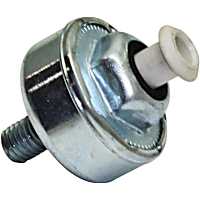 Knock Sensor
Knock Sensor
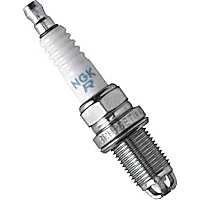 Spark Plug
Spark Plug

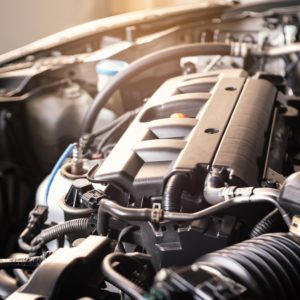


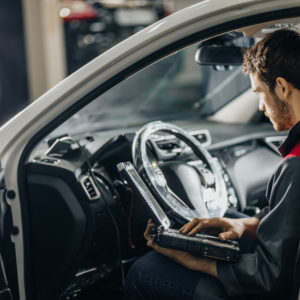











This article is very well written – detailed, informative and easy to understand with technical terms explained in plain English.
Before reading this, I had rough idea of how the sensors worked – most of my assumptions were wrong, however. I now understand, much better, how Knock Sensors work.
Thank you Richard McCuistian for another informative article, which I thoroughly enjoyed reading.
Under the section: How Knock Sensors Work
The sentence:
“The good news is that, with coil-on-plug engines, the timing for each cylinder can be controlled separately – thus if only one engine is “pinging,” the ignition timing of that particular cylinder can be retarded just enough that the pinging stops.”
Shouldn’t the word “engine” in this sentence be “cylinder”?